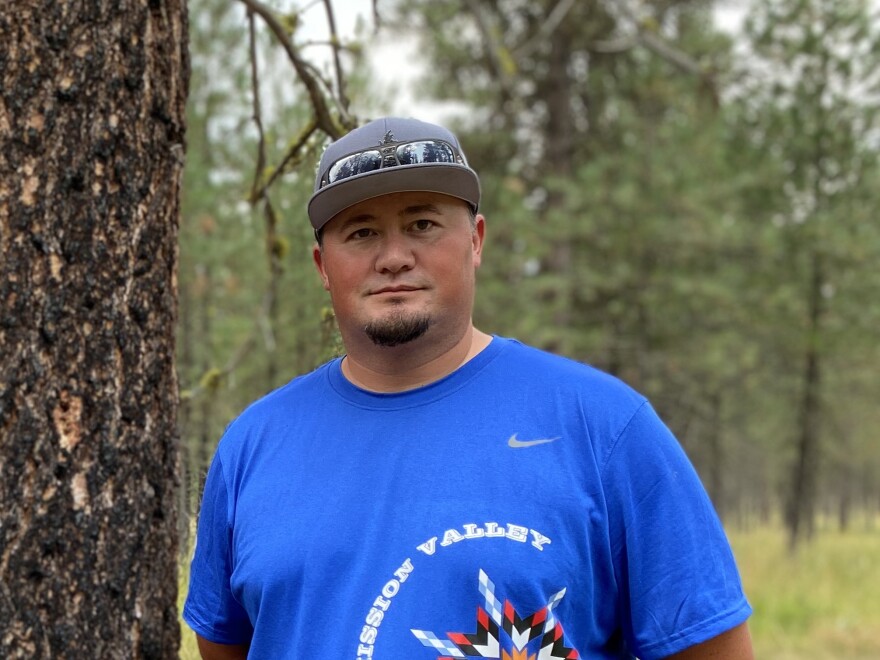Across the country people have been experiencing hazy skies from big wildfires in Western states. More than 3 million acres have already burned, and fire experts say this is just the beginning. A historic drought and heatwave have primed forests to burn big this year, just like they did last year.
A conservative estimate from the U.S. Forest Service said by 2015, fire season had gotten about two-and-a-half months longer than it was in the 1970s. Scientists say that number is growing even larger. At the same time, wildfires are burning more acres than ever before. The nine largest wildfire seasons since reliable records begin have occurred since 2005.
Nick Mott, editor of the Montana Public Radio podcast, Fireline, sat down with NPR to talk about the role climate change is playing in the west's worsening fire seasons.
NOTE: This interview has been edited and condensed for clarity.
Interview Highlights
Fire season is getting longer because of climate change?
People who study the natural world say it is. Like Cathy Whitlock, a paleoecologist at Montana State University. "I would say 95% of it's climate driven," she told me.
That 95% number is definitely the subject of lots of debate. But she thinks it's the right number because she's been looking back at thousands of years of climate history.
How is that possible?
Whitlock goes out on lakes, and then drills way down into the mud at their bottoms and pulls out these long core samples, because when wildfires burn, they deposit ash and charcoal on lakes, which settles down into the mud - so those cores contain records of wildfires going back thousands of years. She says the record shows that there is always more fire when the climate is warmer.
"When you have warmer winters you have less snowpack," she said. "Snow turns to rain. Earlier in the year, the snowpack that you get melts off faster and so you're left with less water in your high elevations as you go into summer."
Another researcher who looks at those lake mud samples is Phil Higuera, a professor of fire ecology at the University of Montana, and he just published "Rocky Mountain subalpine forests now burning more than any time in recent millennia."
"For most of my career, when we look at the past, kind of in a comforting way, we see that, oh, these things that are unusual in the human timescale, they've happened before," Higuera said. "But this paper was different."
Different how?
Because fire has always been a natural part of forest life cycles, so if we look back and see evidence of a similar rate of big fires throughout history, maybe what we're seeing now is normal. But his new paper shows that human-influenced climate change is altering our ecosystems in ways that are totally new and really, really fast. Something else to point out is that sometimes the climate is changing so drastically after a fire burns, the same type of forest doesn't grow back in its place. The landscape is literally changing in the wake of the flames.
He says these big, ecosystem-level changes are really starting to hit home for him.
"What I realized is that while I've spent 20 years thinking about how ecosystems would respond to climate change and how fire regimes would respond to climate change, I have not thought about what that would feel like to witness," Higuera said. "And that has been surprising and and a little bit jolting for sure."
How do ecologists want their science to make a difference? What's the lesson they want land managers and the public to take away?
One key lesson is that fire isn't always bad. Scientists like Andrew Larson, who teaches forest ecology at the University of Montana, say it's natural and essential to ecosystems.
"Fire is an inevitable part of this landscape," he said. "It's just - we live in a flammable place. And we have to get past the promise that forestry made the world years and years ago that we can control fire and put it out and regulate the forest in that way. What we can do is say yes, we live in a smoky, flammable environment. How do we deal with that?"

He means things like getting indoor air filters to make sure we're staying healthy when our cities are full of smoke. Or getting rid of the flammable stuff on and around our homes to make our communities more resilient. Or even trying to reverse the trend of more and more development in forests and fire-prone landscapes.
Something else to keep in mind is that fire is normal. Lots of forests need fire - before Europeans got here there was lots of natural fire in North America, and Native people also set fires to manage the landscapes they lived on. It helps open up the land, it can rejuvenate growth, some species of animals thrive after burns.
For the podcast, we talked with Tony Incashola, Jr., who's head of forestry with the Confederated Salish and Kootenai Tribes in northwest Montana. Lots of tribes, like Incashola's, are working to bring fire back to the landscape.
"It's not only a gift to us, but it's more of a gift to the land," Incashola said.
But it can be really hard to see that bigger picture and embrace 'good fire' when we're totally socked in with smoke, or the flames are approaching a community.
Copyright 2021 Montana Public Radio. To see more, visit Montana Public Radio.


